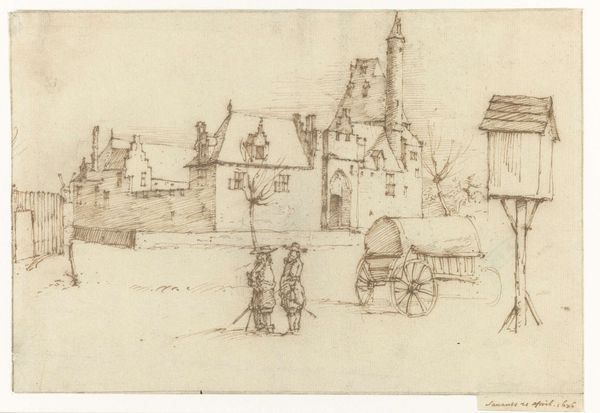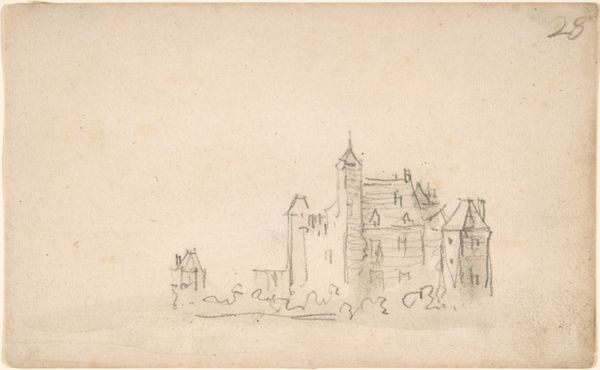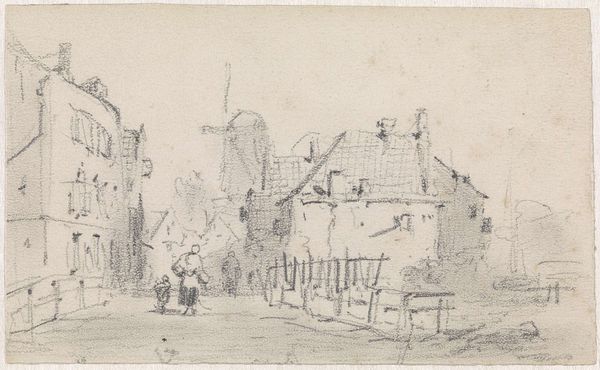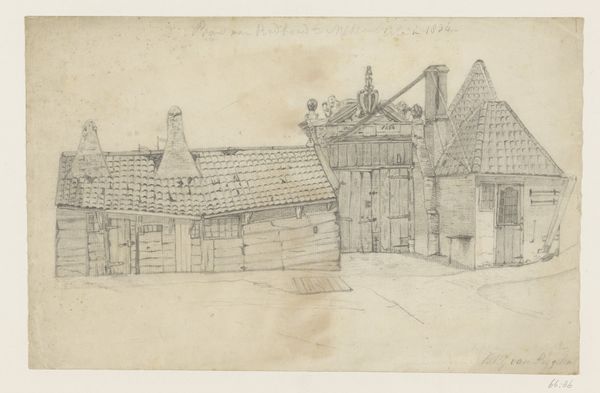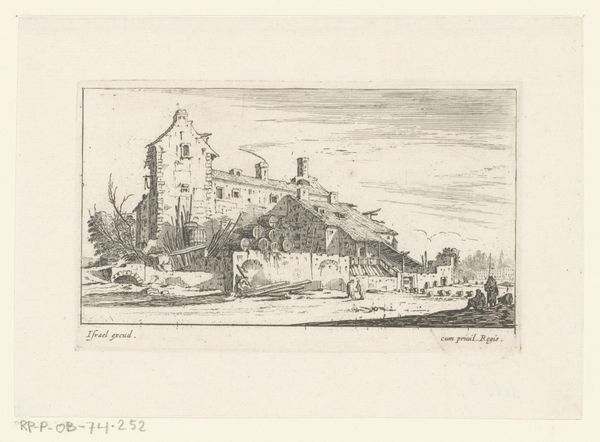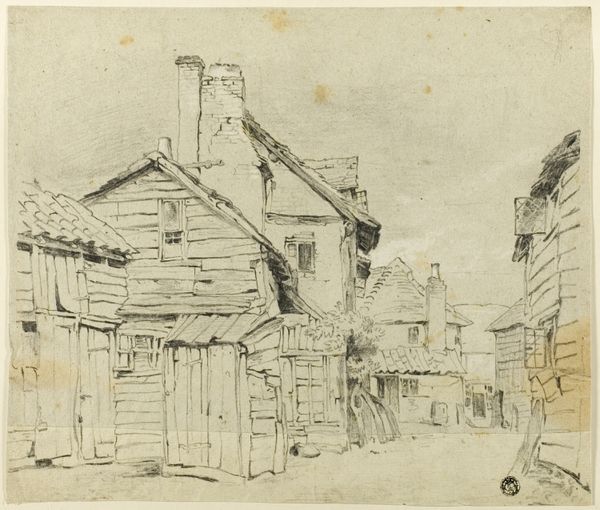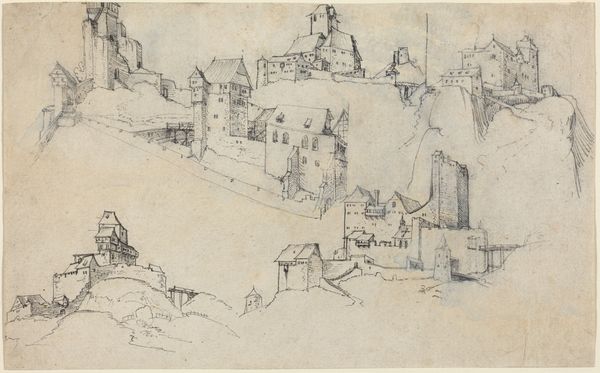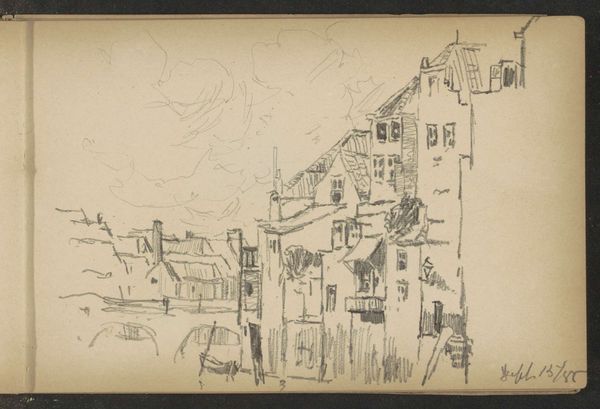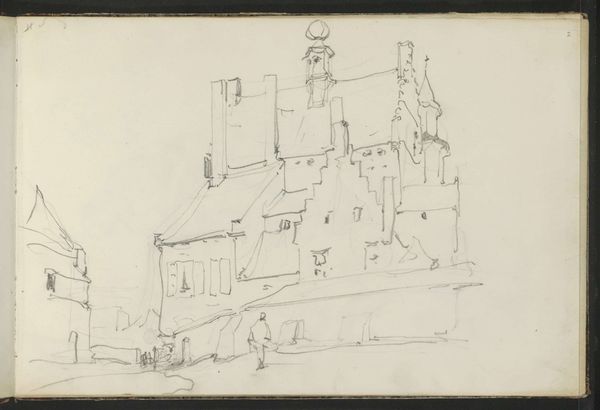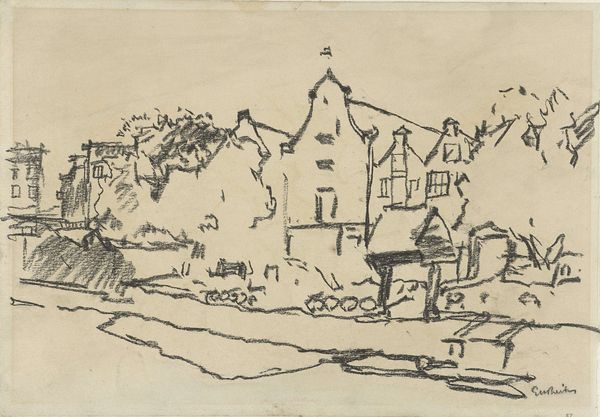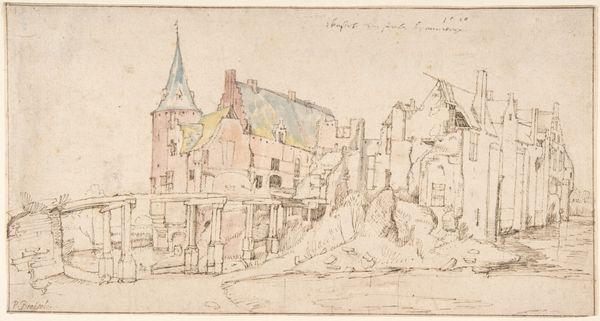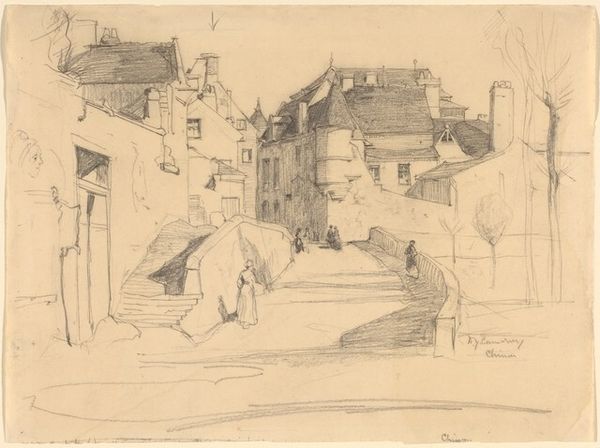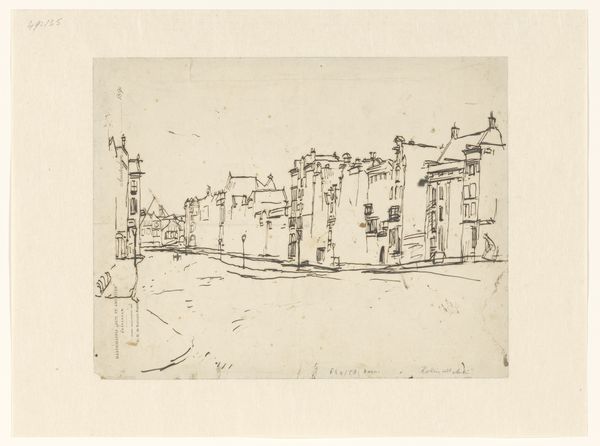
drawing, ink
#
drawing
#
dutch-golden-age
#
landscape
#
ink
#
cityscape
Dimensions: height 141 mm, width 204 mm
Copyright: Rijks Museum: Open Domain
Curator: What a quietly intriguing little scene. There’s something so… personal about it. Editor: Indeed. We’re looking at "Binnenplaats van huis te Dieren," or "Courtyard of a House in Dieren," a drawing rendered in ink by Constantijn (II) Huygens, likely dating back to 1678. Huygens offers a glimpse into 17th-century Dutch life, and more broadly speaks to the history of the Dutch Golden Age. Curator: It feels almost like a memory, or a dreamscape. The spareness of the line, the light... it all contributes to a feeling of hushed stillness. And yet, you get the sense there were people here not long ago... Editor: The composition invites a reading that goes beyond the aesthetic experience you describe. I mean, yes, Huygens’ drawing does masterfully capture the quotidian. But consider the social hierarchies embedded in this "simple" courtyard scene. The architecture, though unassuming to modern eyes, symbolizes the economic stability and status of its inhabitants in their particular moment in history. Curator: Oh, absolutely, I see that too. But isn't there something profoundly human in focusing on these little domestic spaces? I keep coming back to that abandoned cart in the foreground... it’s begging for stories. Is it a pause, or abandonment? It feels like the possibility of change... the beginning of something, not the end. I love that little glimmer of hope amid so much ordinary reality! Editor: And what about the laborers whose work made such domestic tranquility possible? This tranquility and 'ordinariness' came at a price. So many people worked tirelessly—often unseen—to ensure that others could inhabit these spaces with comfort and leisure. A cart evokes all manner of questions about mobility, labor, and class. These Golden Age images so often depict a sliver of society and omit a larger socioeconomic reality that remains invisible to this day. Curator: Well, of course—there are multiple perspectives. But for me, this work reminds me of how profoundly art captures time, whether consciously or unconsciously. Editor: Precisely. This conversation serves as a perfect reminder of how essential multiple vantage points are in enriching our appreciation of art. Each viewpoint contributes to the collective historical consciousness to which all art implicitly belongs. Curator: Hear, hear.
Comments
No comments
Be the first to comment and join the conversation on the ultimate creative platform.
